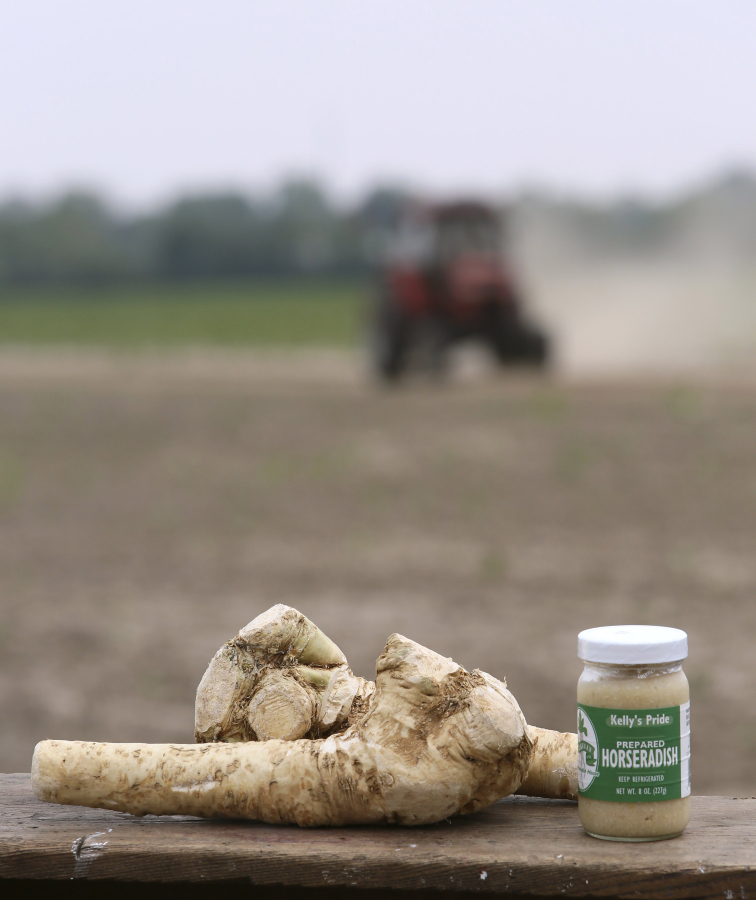You don’t buy a lot of horseradish? That may just be your loss.
Collinsville, Ill., calls itself the Horseradish Capital of the World, and with good reason. Although the acreage devoted to horseradish fluctuates greatly from year to year, and nobody apparently keeps records about such things, it is estimated that between 65 and 85 percent of the world’s horseradish crop is grown in this area.
Why here? Why Collinsville?
According to Lindsey Keller-Janssen, vice president of Keller Farms, it is a combination of sandy soil, the ready availability of water from wells, favorable weather conditions and happenstance.
“It’s where my family moved,” Keller-Janssen said.
Keller Farms was founded in 1887, when Keller-Janssen’s great-great-grandfather, Ferdinand Keller, came to this country from Austria. Family legend has it that he brought with him a horseradish plant and a pregnant wife, who gave birth to Keller-Janssen’s great-grandfather on the boat.
The land he settled was fertile, too. Today, Keller Farms owns a little more than 5,000 acres, some of it in Collinsville but much of it scattered throughout Illinois and into southeastern Missouri. On this land, they grow not only horseradish but also sweet corn, field corn, soybeans and winter wheat, which they sometimes use as ground cover.



